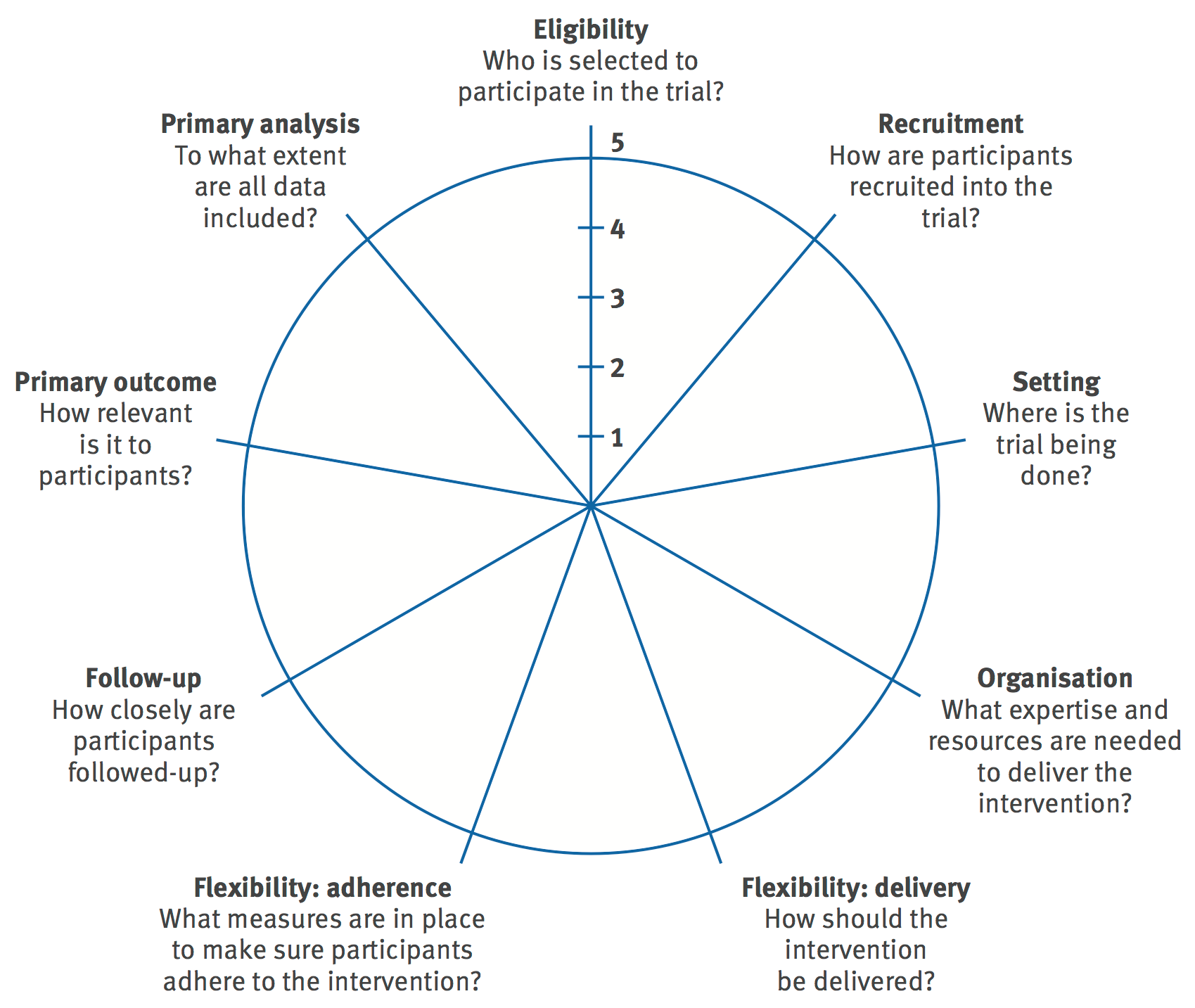2.1 Introduction
This section on the PRECIS-2 Framework, including the linked videos and resources, may be useful to individuals planning pragmatic research in two key ways:
- Identify the benefits of implementation science frameworks for pragmatic research across study phases (e.g., study design, planning, implementation, evaluation)
- Understand how to apply the PRECIS-2 implementation science framework to plan pragmatic research projects, by iteratively rating the degree of pragmatism for the PRECIS-2 and PRECIS-2S dimensions and making adjustments to the study design to balance external validity and internal validity considerations
Potential points of application for researchers include:
- Using the PRECIS-2 rating tool to rate PRECIS-2 dimensions
- Using the PRECIS-2S rating tool to rate those dimensions
- Rating processes may be done with the research team and/or community partners
- This process invites input during the study design phase to consider how each domain is being handled with attention to pragmatic research principles
2.2 Using Frameworks
Frameworks are used for pragmatic research to assist with the study design, planning, and evaluation. Implementation science frameworks have been developed based on implementation theories, empirical data, or input from potential adopters and implementers on factors necessary for optimal implementation of effective programs. Frameworks benefit researchers in planning pragmatic research in several ways:
- Designing for real-world contexts and audiences
- Incorporating implementation science methods that accelerate the potential for dissemination
- Efficiently describing one’s approach to grant reviewers
- Prioritizing constructs or outcomes that are part of frameworks
2.3 The Pragmatic-Explanatory Continuum Indicatory Summary (PRECIS-2)
The PRECIS-2 framework was designed with input from community, research, and policy group representatives to assess the extent to which a trial is intended to be pragmatic with a priority on generalizability or how much it intends to be explanatory or efficacy-focused. It includes a simple visual display to show the level of pragmatism visually in several domains.
The PRECIS-2 framework can be used a) as a study planning tool, b) to report on studies, and c) to rate the pragmatism of published studies as part of a systematic review.
This latter approach may assist the selection of potential pragmatic and effective interventions. The PRECIS-2 has nine domains reflecting key design features of clinical trials. Each element of a study design is given a rating between 1 and 5 on each domain relative to usual care, with 1 representing a very explanatory (or efficacy-focused) trial and 5 representing a very pragmatic trial.
For interactive rating tools, see the PRECIS-2.org website.
- Loudon K, Treweek S, Sullivan F, Donnan P, Thorpe KE, Zwarenstein M. The PRECIS-2 tool: designing trials that are fit for purpose. BMJ. 2015;350:h2147. Published 2015 May 8. doi:10.1136/bmj.h2147
- Norton WE, Loudon K, Chambers DA, Zwarenstein M. Designing provider-focused implementation trials with purpose and intent: introducing the PRECIS-2-PS tool. Implement Sci. 2021;16(1):7. Published 2021 Jan 7. doi:10.1186/s13012-020-01075-y
-
Johnson KE, Neta G, Dember LM, et al. Use of PRECIS ratings in the National Institutes of Health (NIH) Health Care Systems Research Collaboratory. Trials. 2016;17:32. Published 2016 Jan 16. doi:10.1186/s13063-016-1158-y
-
Zwarenstein M. ‘Pragmatic’ and ‘explanatory’ attitudes to randomised trials. J R Soc Med. 2017;110(5):208-218. doi:10.1177/0141076817706303
